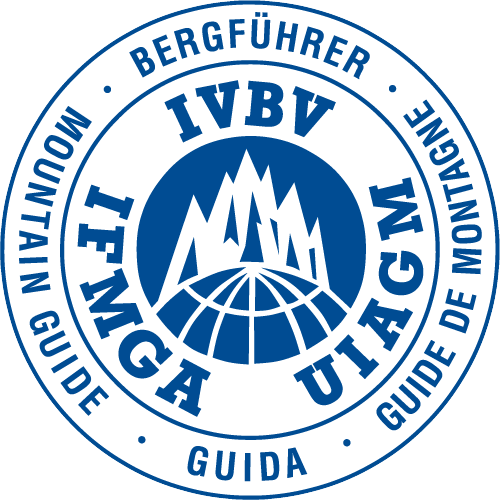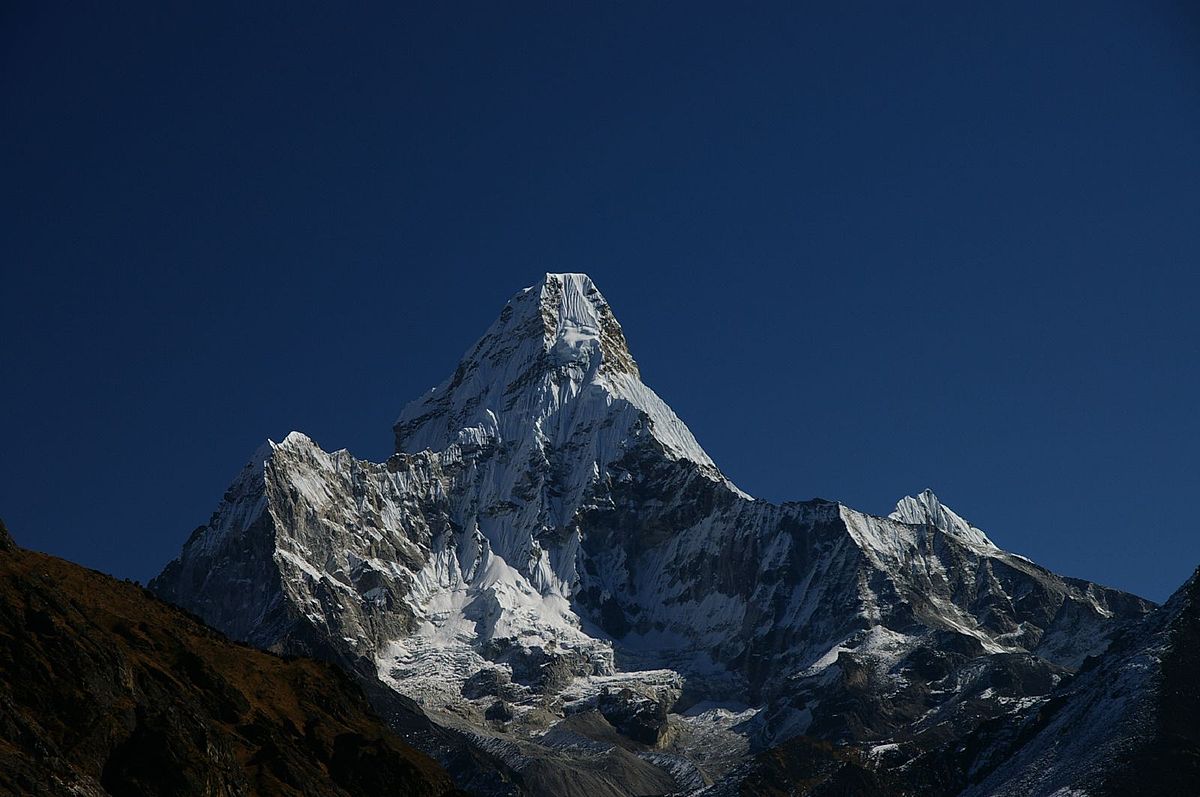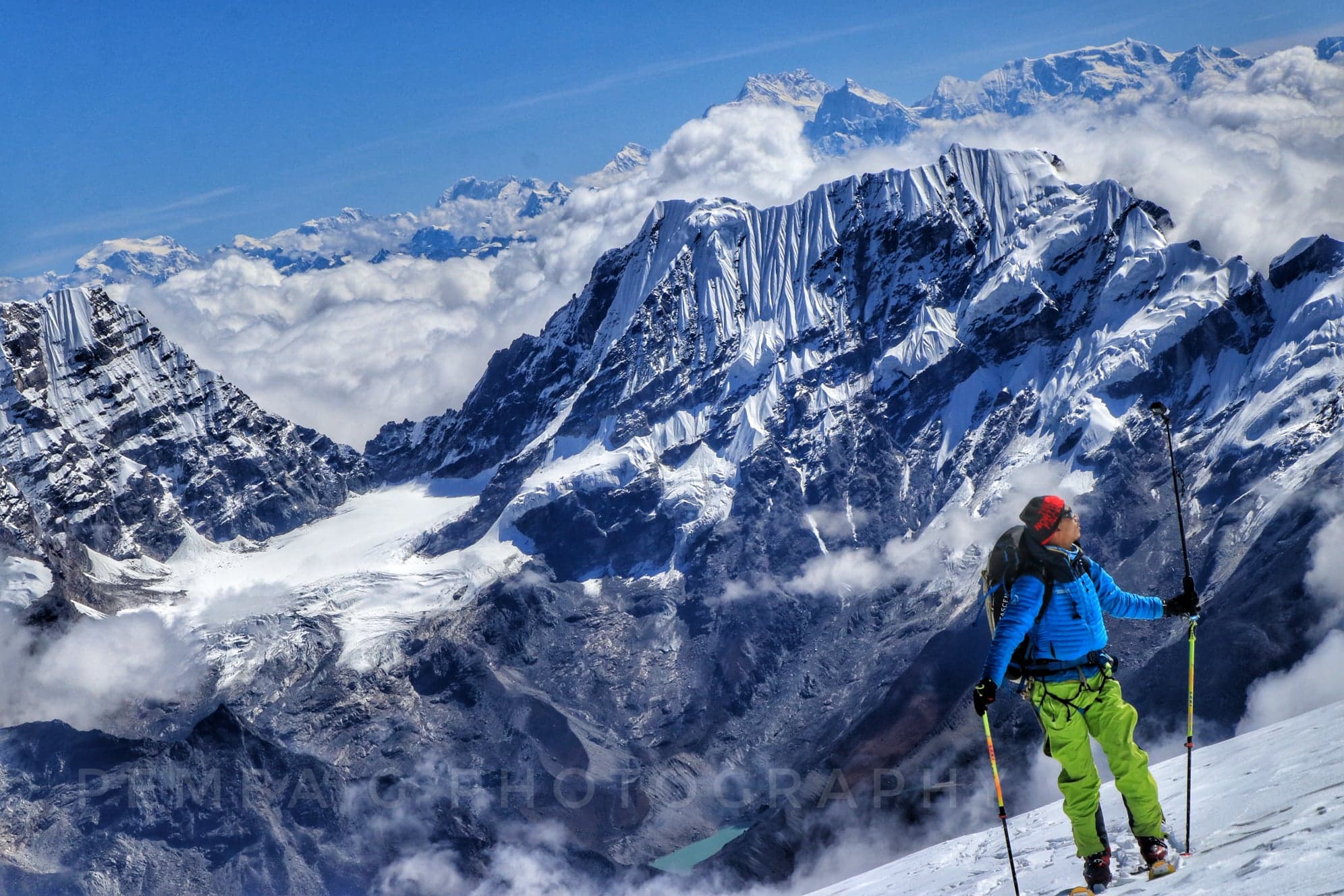

Our team is here to support you 24/7. Please feel free to provide your queries. You will get response within few minutes.

Starts at $7200



Ama Dablam is a mountain in eastern Nepal’s Khumbu region. It is one of the most beautiful mountains in the world, standing at a height of 6,812 meters (22,349 feet). The mountain’s name translates to “Mother’s Necklace” in the local Sherpa language, as its shape mimics a mother embracing her child and a traditional necklace worn by Sherpa women.
Ama Dablam is a famous location for experienced mountaineers due to its steep, icy, and technical climb. A team of four climbers led by Sir Edmund Hillary made the first ascent of Ama Dablam in 1961. Since then, the peak has been climbed numerous times via various routes.
Although Ama Dablam is not as high as some of the other peaks in the region, its steep and exposed terrain makes it a difficult and technical ascent. The peak is also known for its unpredictable weather, which adds to the difficulty of climbing. The trip to Ama Dablam requires about 32 days, including acclimatization and preparation time. The ascent consists of rock, ice, and snow climbing, as well as several technical sections. The summit offers stunning views of neighboring peaks such as Everest, Lhotse, and Makalu. The trek up the Khumbu valley is also an unforgettable experience.

29 Days Expedition / (SKILL LEVEL: hard)
Day 01: Arrival in Kathmandu(1300m/4265ft)
Our team shall pick you up at the Tribhuvan International Airport from where you will be transferred to a standard hotel on a bed and breakfast basis. In these three days, we shall manage and prepare ourselves for the trek.
Day 02: A full day sightseeing tour in Kathmandu (1300m/4265ft)
Following breakfast, you will depart for a full-day sightseeing trip of the Kathmandu Valley. You can visit the sacred Pashupatinath Temple and Swayambunath, both of which are UNESCO World Heritage sites. Our guided tour highlights the largest Buddhist Stupa at Boudhnath and the fine arts and historical architecture of Kathmandu Durbar Square, which represent ancient Nepalese culture.
Day 03: Preparation days for official documents and expedition
You can take advantage of this day to relax while all permits and official papers are finalized. You can take a stroll around the city center and get any gear if missed or required for the trip.
Day 04: Fly to Lukla (2850m/9,350ft) and trek to Phakding (2,620m/8,594ft)
Enjoy the thrilling journey through the mountains to Lukla, generally regarded as one of the world’s most amazing and difficult airports. We’ll continue on to Phakding because this journey won’t take more than half an hour.
The trek to Phakding is simple, and you can admire the hamlets along the way while taking the same trekking route as other trekkers.
Day 05: Trek to Namche Bazar (3,420m/11,218ft)
From Phakding, the path follows the Dudh Koshi valley north, meandering through the pines and crossing it twice via small suspension bridges before arriving at Monjo, the Sagarmatha National Park’s entry gate. You will be rewarded with your first glimpses of Kusum Kanguru, Thamserku, Everest, and Nuptse along the route. After a two-hour steep climb, we get our first glimpse of Mt. Everest, peering over the Lhotse-Nuptse ridge. A steep ascent to the lovely hamlet of Namche Bazaar will reward you with even more spectacular views and a comfortable place to spend the second night of your trek.
Day 06: Rest day at Namche Bazaar for acclimatization (3,420m/11,218ft)
It is essential to take some time off while ascending in altitude to enable one’s body to adjust to the new surroundings. We’ll take a day off and unwind in Namche Bazar to prepare our bodies for the next part of the trip. During our free day, we can visit the incredible Hotel Everest View and enjoy panoramic vistas of Everest, Lhotse, and Nuptse, as well as other high peaks.
Day 07: Trek to Tengboche (3870m/12,697ft)
Our hike begins with a peaceful forest walk with a stunning mountain view. After passing water-powered prayer wheels, the path rises through a tall, mature rhododendron forest. The hamlet of Tengboche is spread across a wide, green saddle below a crescent-shaped hill of scrub pines and firs. Amadablam stands high of the massif holding Everest, Nuptse, Lhotse, and other Himalayan giants from the hilltop viewpoint. We visit Tengboche, the biggest Khumbu Buddhist monastery.
Day 08: Trek to Amadablam Base Camp (4570m/14,993ft)
When one sees Amadablam, it feels like heaven on earth. We must rest and acclimatize as we climb higher. When we arrive at the BC, our support staff will have their tents put up.
Day 09: Base Camp Preparation and Rest (4570m/14,993ft)
The day is set aside for getting used to the new environment or just relaxing. On the day of our trip, we will finish making all of the arrangements that are required. Make sure that all of the equipment is in good condition, and get yourself both mentally and physically prepared.
Day 10 – 23: Climbing Period (6812m/22,350ft)
To prepare for the summit push, we’ll rotate and acclimatize. Given the favorable weather conditions, we will attempt a summit push after a few rotations between camps. Everest, Lhotse, Nuptse, and Makalu can all be seen from the summit of Amadablam.
Day 10: first rotation
From the Ama Dablam Base Camp, we ascend to Camp 1 at 5,700m (17,400 ft) along the standard route for acclimatization. This initial climb is technically challenging. We will need to carry some equipment to Camp 1, which we will leave there for further climbing. After we reach Camp 1, we return back to Base Camp.
Day 11 – 12: resting days
We rest in Base Camp for two nights and we will drink a lot of water to hydrate.
Day 13: second rotation
We ascend to Camp 1 and stay overnight.
Day 14: camp 2
We will climb to Camp 2 at 6200m. The climb from Camp 1 to Camp 2 is the most challenging part, as you need to climb on a rocky ridge and need to climb the Yellow Tower, which is the most technical part of the mountain. We will stay here overnight.
Day 15: base camp
We return to Base Camp and we just completed our second rotation. We will take a plenty of rest in Base Camp to gain enough strength for the summit push.
Day 16 – 17: resting days
Rest in Base Camp and preparation for the summit push.
Day 18: camp 1
We start the summit push by climbing to Camp 1.
Day 19: camp 2
Climb to Camp 2.
Day 20: summit
The climb from Camp 2 to the summit involves mixed terrain, including rock, snow, and ice, which can be loose in certain places. We will have to climb on a very sharp snow ridge in some parts. Despite the challenges, the route offers spectacular views and a true sense of adventure. We will pass through Camp 3. The final stretch from Camp 3 to the summit is relatively less technical but still requires steady progress and careful navigation. After reaching the summit of Ama Dablam, we make our descent back to Camp 2, retracing our steps and removing any newly established ropes to leave the mountain as we found it.
Day 21: base camp
We will descend to Base Camp from Camp 2 and celebrate our successful summit journey.
Please note that we might add two extra days in case of unfavourable weather conditions. (Days 22 and 23).
Day 24: Trek from Amadablam Base Camp to Tengboche (3870m/12,697ft)
Tengboche can be reached in roughly three and a half hours. You can enjoy breathtaking panoramas of Mount Amadablam, the surrounding verdant hills, and the winding river from this tiny settlement that is home to a well-known monastery.
You will also have an option to catch a helicopter to Lukla, or directly to Kathmandu, instead of trekking back.
Day 25: Trek from Tengboche to Namche (3,420m/11,218ft)
Tengboche can be reached in roughly three and a half hours. You can enjoy breathtaking panoramas of Mount Amadablam, the surrounding verdant hills, and the winding river from this tiny settlement that is home to a well-known monastery.
Day 26: Trek From Namche Bazar to Lukla (2850m/9,350ft)
The hardest part of the trip is descending from Namche to the Dudh Koshi. Before reaching Phakding, we will pass through rhododendron and pine woods with snow-capped peaks. Arriving in Lukla after going through beautiful mountain scenery and Sherpa villages. You can explore the neighborhood.
Day 27: Flight to Kathmandu (1300m/4265ft)
After saying our final goodbyes to our porters, we’ll take a thrilling half and hour flight back to Kathmandu. (There may also be an additional day needed if there is bad weather in Lukla, causing the Lukla flight to be delayed or cancelled).
Day 28: Extra Day in Kathmandu(1300m/4265ft)
Today is your leisure day in Kathmandu Valley. Rest in your hotel room. You can also take a stroll through the streets and purchase some Nepalese souvenirs. We will have a traditional Nepali dinner in the evening, followed by cultural performances in the hotel.
Day 29: Departure
Prior to your scheduled departure, a member of our team or a representative will drop you off at the International Airport. You should arrive at the airport three hours before your flight to complete the check-in process.